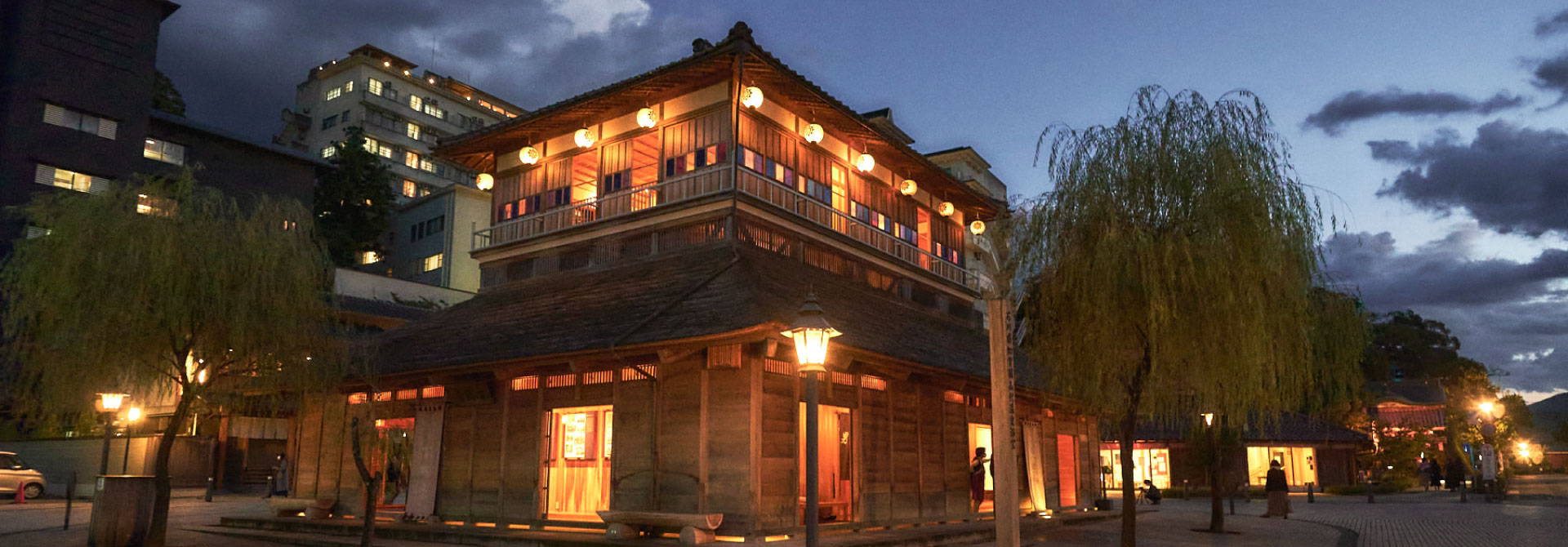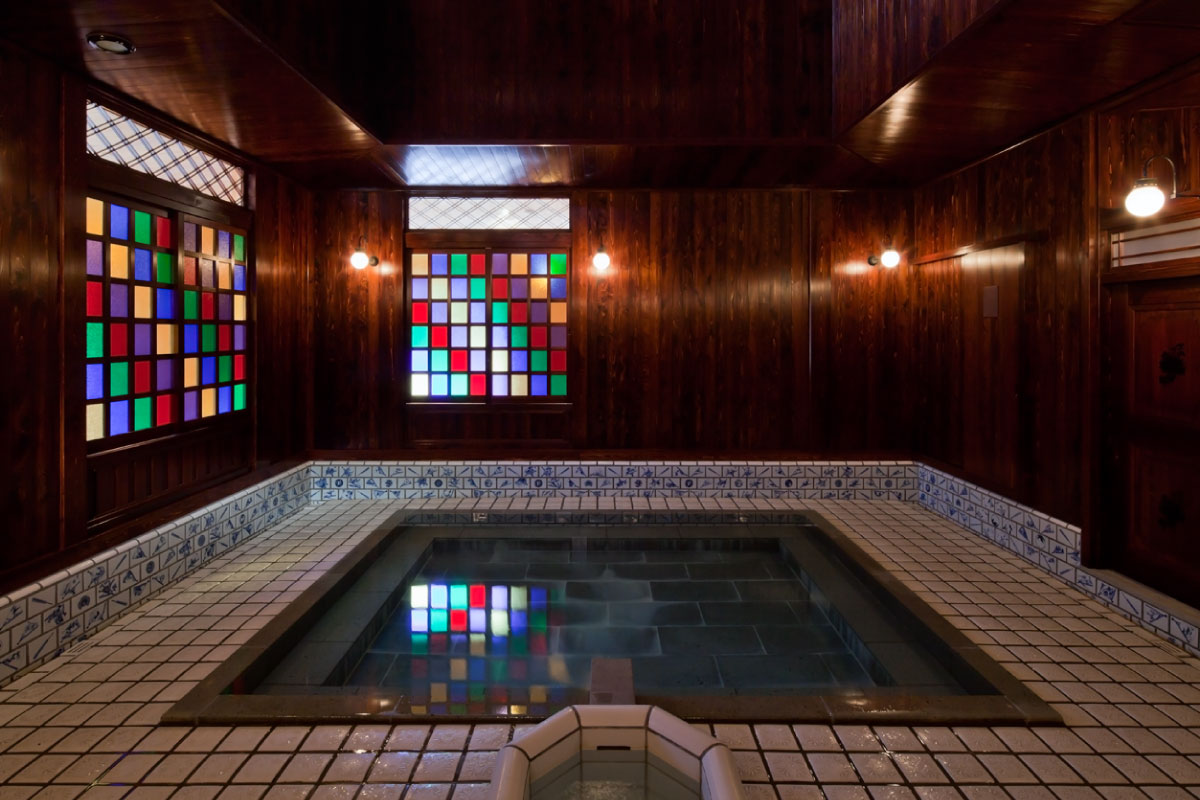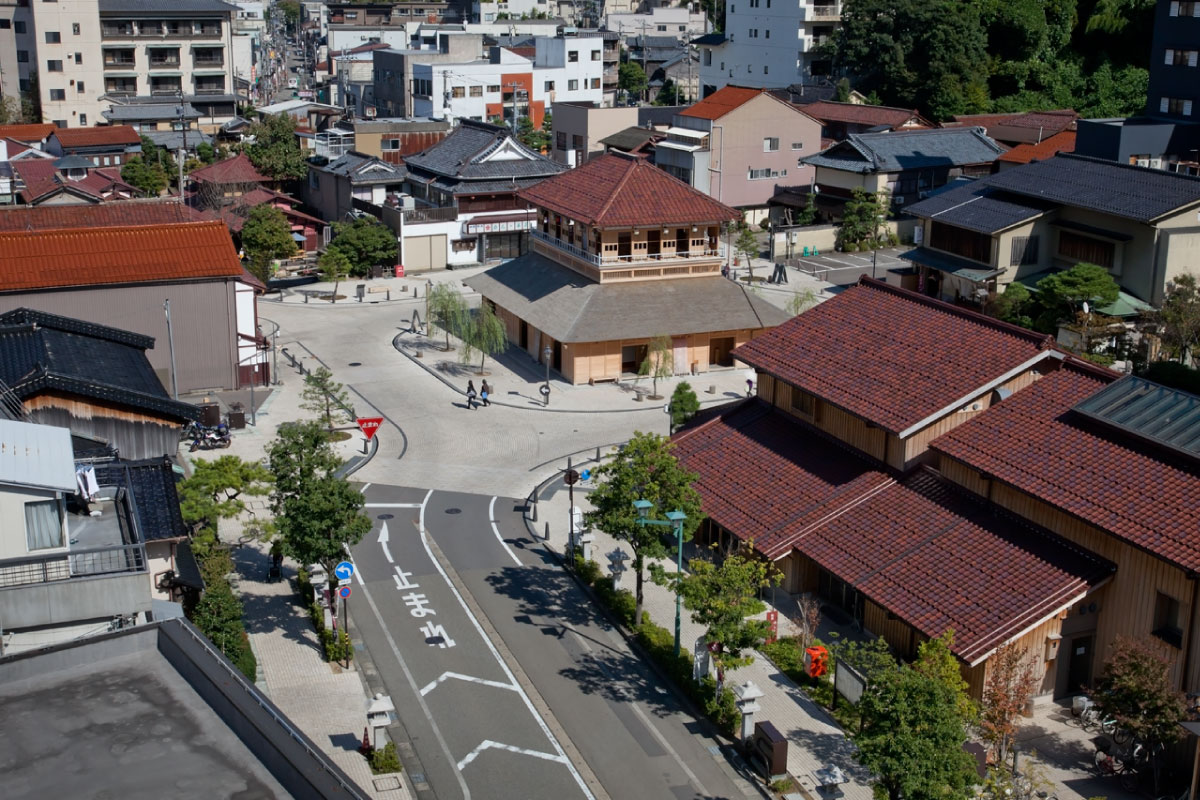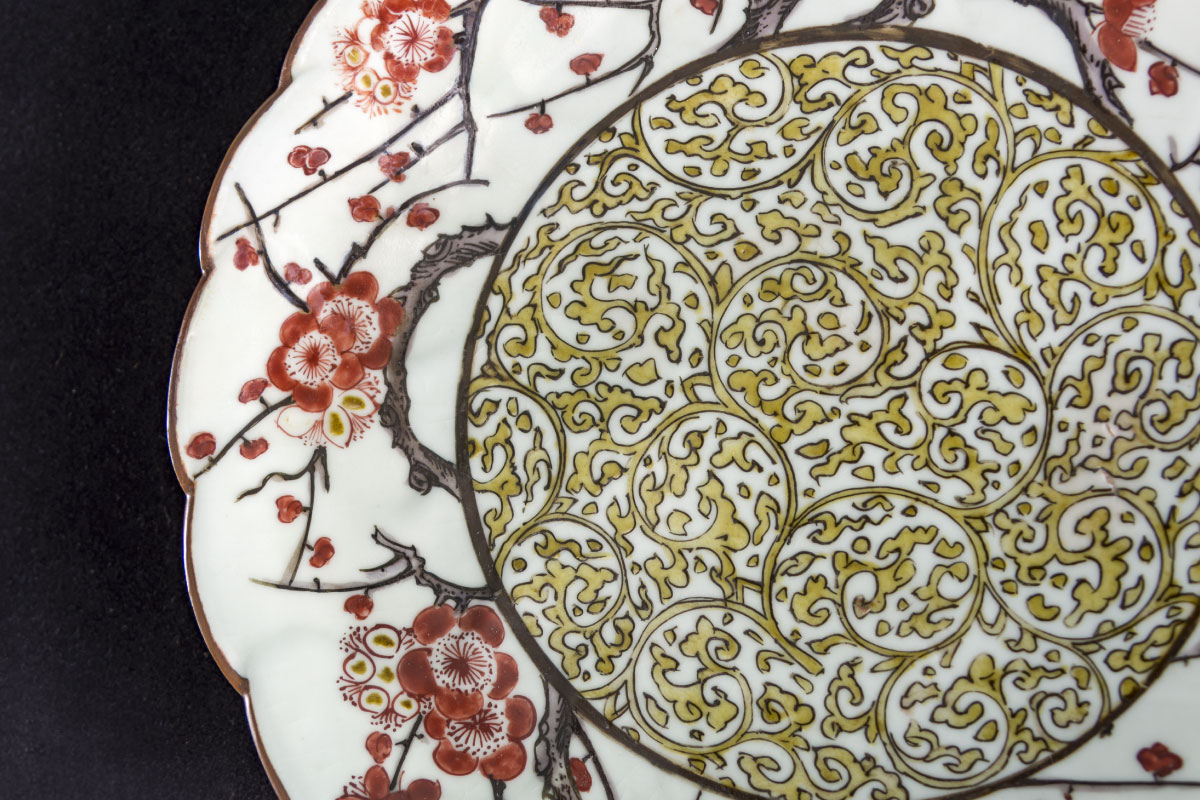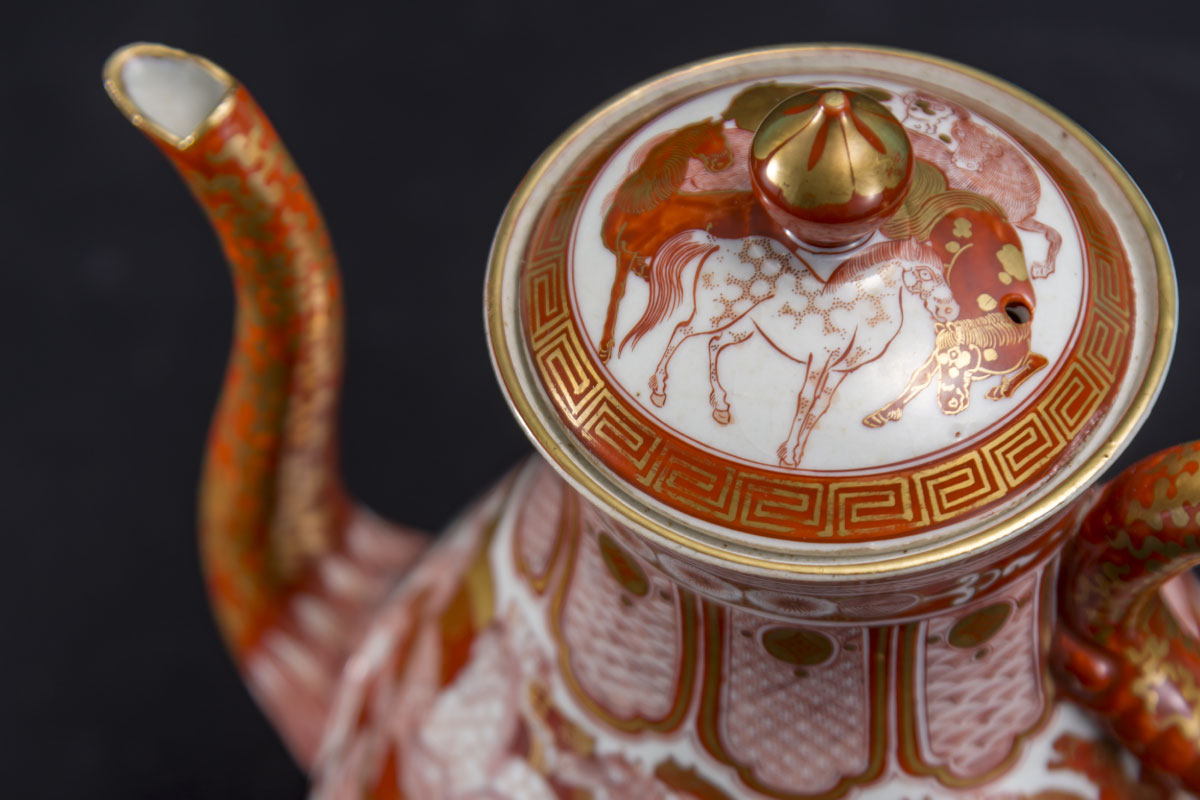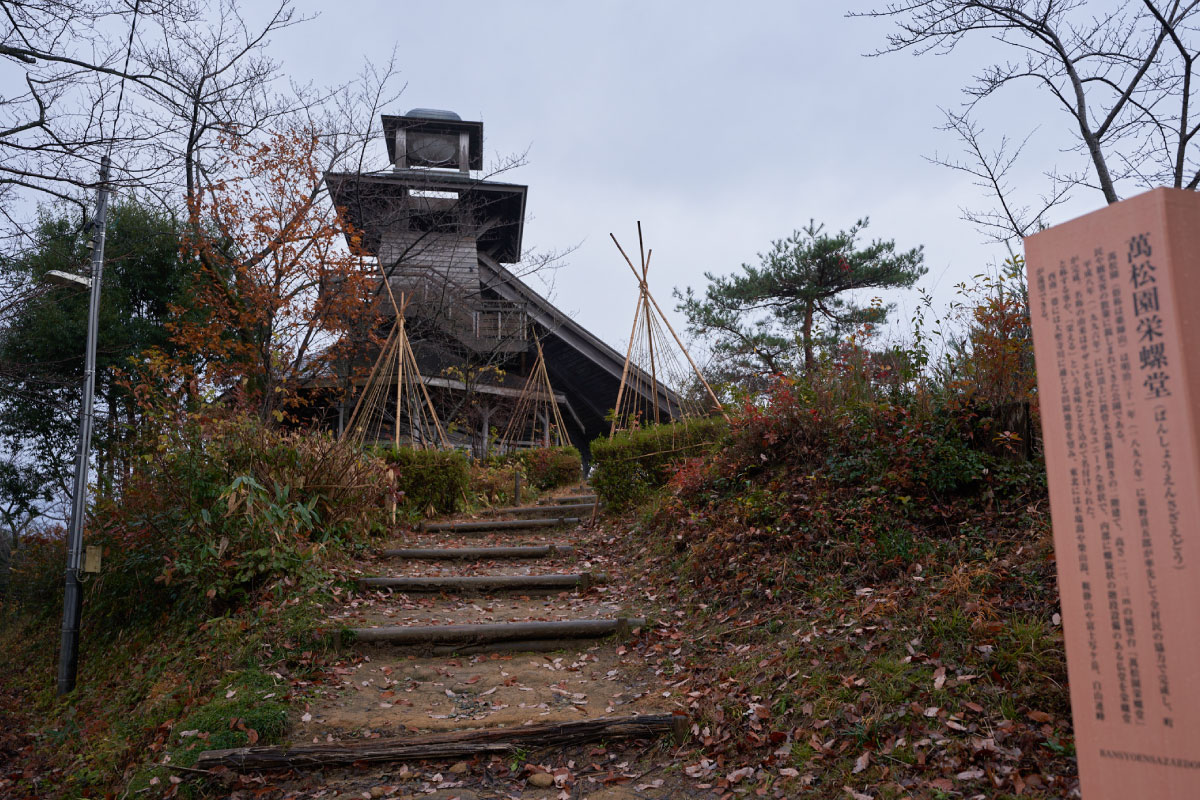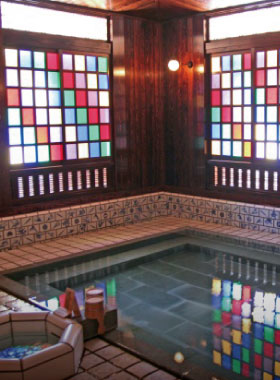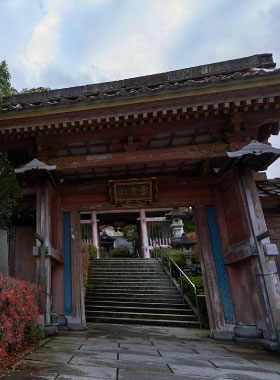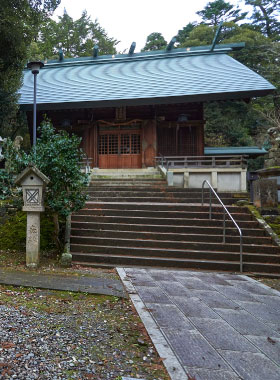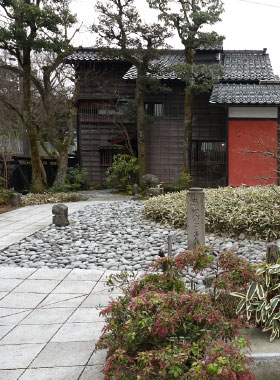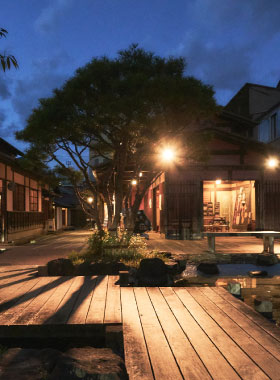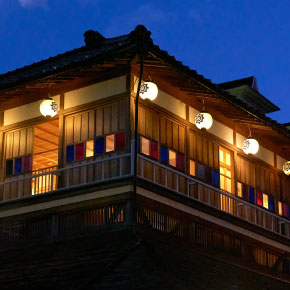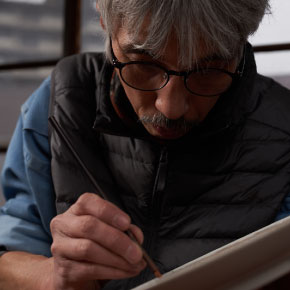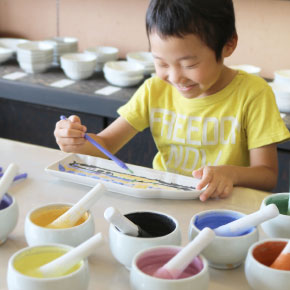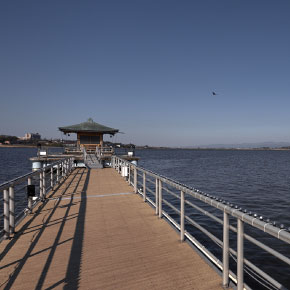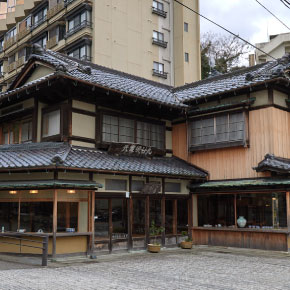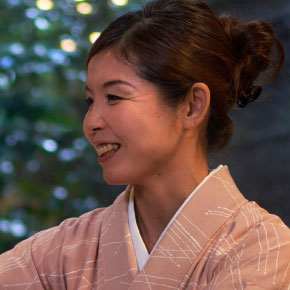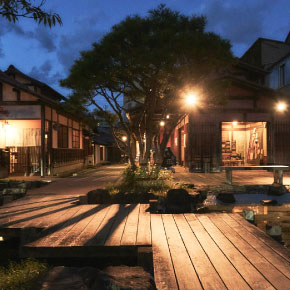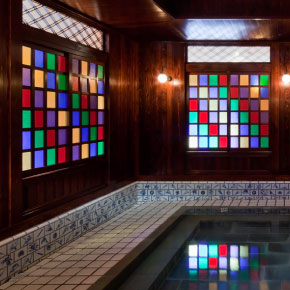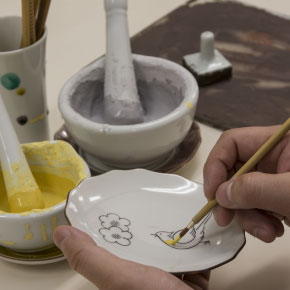A Town From Another Time
In the foothills of the sacred Mount Hakusan lies the ancient town of Yamashiro Onsen. It is a place shrouded in mystery and mythology and feels almost otherworldly. Standing proud and solo at its centre is Yamashiro Onsen’s Ko-soyu (old public bathhouse). Encircled by a cobbled road, the building is the town’s centrepiece. The elegant, wooden, recently restored Meiji-era (1868-1912) bathhouse is brimming with old-world charm. Tiny stained-glass windows run the rim of its roof section, and at dusk they shimmer in the light of the delicate lanterns above. In the evening, the town’s peaceful centre becomes awash with the warm glow of the old street lamps. Beyond the town square, a maze of enchanting Edo period (1603-1868) laneways unfolds, hosting a number of restaurants, cafes and shops.
Hot Spring Rejuvenation
Yamashiro Onsen is one of a trifecta of famed hot spring towns in the Kaga City area (alongside Yamanaka Onsen and Katayamazu Onsen). Its medicinal waters are said to relieve joint and muscle pain as well as helping to clear skin complaints. Therefore, a trip to this beautiful onsen town would not be complete without a rejuvenating soak in one of the baths. Most of Yamashiro Onsen’s ryokans have their own communal baths, many of which offer day bathing for non-guests, but the town’s public baths are where visitors have a chance to join the locals. Historically, when ryokans didn’t provide baths, the town’s communal bathhouse was where travellers would flock to relax and socialise.
In Yamashiro Onsen, there are two different bathhouses to choose from: the Soyu (public bathhouse) and the older, aforementioned Ko-soyu, both with separate bathing for men and women. They differ in style, but a visit to either is a delightfully relaxing experience, as well as an opportunity to fully immerse oneself in Japanese culture.
The Soyu’s offering is the more contemporary of the two. It consists of a large, bright room with shower stations lining its edges and two square baths dominating its centre. In a nod to Yamashiro Onsen’s crafts roots, delicately illustrated Kutani-yaki tiles adorn the bathhouse’s inner walls. At the far end, a wide window overlooks a pretty Japanese-style garden. After a warming soak, onsen eggs can be enjoyed in the adjoining café-cum-rest area. These are eggs which, as the name suggests, have been cooked in the natural, geothermal waters.
The Ko-soyu’s setup is more simple, consisting of a small room with one sunken bath. There are no showers here, instead, visitors are to pour buckets of water over themselves before getting in, as would have been the practice hundreds of years ago. But what this bathhouse lacks in contemporary washing facilities it makes up for in beauty and atmosphere. Dark wooden walls, coloured glass windows and glimmering lamps immediately transport visitors to another time. Upstairs, a rest area of traditional tatami mats allows visitors to relax post-bath with tea and look out from the balcony over the town.
A free public footbath is tucked away under a canopy just across from the Ko-soyu. In this little corner of the square, visitors are welcome to sit, rest and relieve weary feet as they enjoy sweet treats from one of the local Japanese sweet shops.
Kutani-yaki Porcelain
Yamashiro Onsen is the home of Kutani-yaki porcelain, some of the most famous porcelain in Japan. Kutani-yaki creations are distinctive, consisting of luxurious-looking tableware, as well as vases and ornaments made from local clay and decorated with vibrant depictions of nature and people. They are characterised by their use of only 5 colours (green, yellow, purple, dark blue and red).
The often astonishingly intricate patterns reflect the level of skill required in Kutani-yaki production. Artisans use a special under and over-glaze technique - the same technique that has been employed for the last 350 years. Historically, Kutani-yaki creations were sought after commodities, attracting interest from Japanese aristocracy. Today, the same is true - ornate pieces are often commissioned and gifted to high-ranking foreign dignitaries - but nowadays, affordable, everyday use pieces of Kutani-yaki are also common.
Exquisite examples of this ancient craft can be found all over Yamashiro Onsen, for sale in the shops and galleries, but also to admire in the décor of its buildings. Visitors can even try their hand at making their own: Yamashiro Onsen offers a variety of Kutani-yaki potting wheel and painting experiences.
Ancient Beginnings
The town’s mythological beginnings date back 1300 years. It is said to have been discovered by wandering Buddhist monk Gyoki (668-749). Legend has it that here Gyoki spotted a three-legged crow nursing its injured wing in a pool of the therapeutic, hot spring waters, which established Yamashiro Onsen as a hot spring destination. Many believe that the bird in the story is the Yatagarasu - the three-legged crow that appears regularly throughout Japanese mythology.
Beyond the Baths… Sacred Spaces and Secret Passages
Although celebrated primarily for its hot springs, Yamashiro Onsen also boasts a number of other fascinating sites. Yakuoin Onsenji temple and neighbouring Hatori Shrine lie to the south of the Ko-soyu, and their marvellously precincts are a joy to explore. The temple, established 1300 years ago by Gyoki (668-749), houses statues of Buddhist deities that watch over the hot springs.
In a far corner of the precinct some steps imprinted with letters from the Hiragana alphabet lead furtively into the forest that rises up the hillside. The moss-covered trail wends its way through the trees where light shafts break through the canopy and beam onto the forest floor. It leads to a small altar dedicated to the priest attributed with creating the oldest surviving Hiragana chart, and continues on, passing aged statues, before arriving at an observation deck.
Greeting visitors here are sweeping views across the countryside. Yamashiro Onsen’s picturesque townscape is laid out below, enveloped by thick forest. Each season offers a dramatically different scene. In summer, the forest stretches out - a carpet of green - to the misty blue ridges of the Hakusan mountain range. The dusky pinks of the cherry blossoms can be seen in spring, and in autumn, bright reds and golds make for an especially stunning vista. In winter, whilst the trees are bare, nothing quite beats the majesty of the snow-tipped Mount Hakusan on the horizon.
